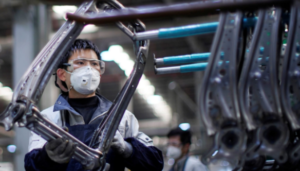I’ve talked a lot about return to work, but what about return to school. The reality is, this one decision will have a ton of impact on your workforce. This is playing out across the nation right now and parents are stressed to the max about what’s going to happen.
First, I think both educators and parents believe the best place for kids to learn is in the classroom. No one is really debating this, except maybe those folks who believe in homeschooling.
I heard a quote today that helped me gain some perspective on this issue from the Superintendent from the Ithica, NY school district, he said:
Parents will forgive us for educational malpractice, but they will not forgive us if we don’t take of their children’s health.
In hindsight, I don’t think any parent who pays attention to their child’s education felt like public education was good last spring when everything got shut down and kids got sent home. Remote learning, the first time around, failed miserably across the board in a crisis. We’ll see how it goes this fall for those school systems who have already made the decision to delay or outright not return in the fall.
We’ll forgive the educational malpractice of public education because we understand the extraordinary circumstances. We will not forgive schools returning and kids dying. The nation will come unglued. If you think cancel culture is bad, wait until the first kid who gets COVID at school and dies. There will be complete anarchy.
There are two things American’s won’t put up with: Kids dying and Puppies dying.
We know the chances of a kid dying from COVID are rare, but they are not zero. If schools go back, some kid will die from COVID. Some teachers and administrators will 100% die from COVID, and it seems like the nation, for those who want return to school, are actually fine with that concept. I mean, look, it’s either you die or I have to stay home and teach my kid math, sorry. For those about to cancel me, understand that the last sentence is called sarcasm.
I get it, trying to work from home and educate your children at home is less than ideal. One of our strengths as Americans is our ingenuity, though. Why aren’t we coming together as neighbors and creating our own neighborhood educational/family bubbles? Five families with school-aged kids get together and each family takes all the kids one day a week and create an 1800s one-room schoolhouse where kids of all ages will do their work, get help, and mentorship from each other.
While the rest of the world laughs at us because somehow we believe wearing a mask to saves lives tramples our freedoms, we need to figure this stuff out, and unfortunately, our government and our public education aren’t really going to help us. But, that’s okay. I decided to have my kids, and I can decide how to educate them. Those “freaks” who homeschooled their kids and none of us understood, figured it out. Turns out homeschooled kids are pretty smart. We can figure it out too.
Public education and higher ed have been broken for a while. The pandemic is speeding up their demise. Tech companies are feverishly working to disrupt this space in ways we can’t even comprehend right now, but those won’t be ready by September. Yep, it sucks. All of this sucks in comparison to a year ago. But, the other great American trait we have is optimism, and I’m optimistic our kids, under their parent’s guidance, will be just fine.



